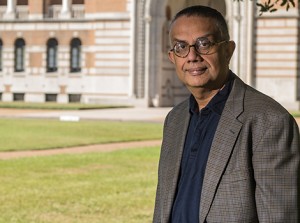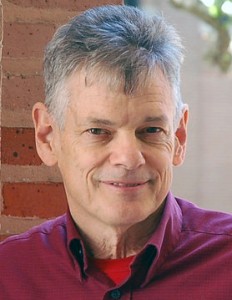Rice-led Project Aims for Computing that Can Live at the Margins
Rice University recently announced the opening of a new center that explores solutions to the physical and energy limitations currently restricting the continued expansion of computing capacity required to solve emerging workloads. Krishna Palem, the Kenneth and Audrey Kennedy Professor of Computing, has been designated the director for the Rice University Center for Computing at the Margins. RUCCAM unites a team of dedicated Rice University professors and specialists from universities around the world who intend to change the manner in which resources are utilized, even at the margins of stability and accuracy, in order to increase the efficiency at which answers can be calculated.
Work done at the center, in collaboration with partner institutions, has potential applications for –and is supported by— a Defense Advanced Research Projects Agency (DARPA) initiative under the Building Resource Adaptive Software Systems program. Projects under the BRASS program are tasked with the ambitious goal of spurring advances that will allow software to remain robust and functional for more than 100 years.
As one example, the Proteus project – a joint venture between researchers at Rice MIT, UT Austin and the University of Chicago — may seem far-fetched in an age when computer hardware and software typically becomes obsolete or incompatible within a few years, but Palem said improving software adaptability by dynamically trading cost for quality has the potential to enable new generations of quasi-autonomous computing systems.
“The Proteus platform will be developed and tested on a drone system,” Palem said. “One scenario that is directly relevant to Proteus’s mission is ensuring that such vehicles continue flying and meet mission objectives even if critical components like batteries or sensors fail or get destroyed in mid-flight.”
“Importantly, the same techniques that allow a system to adapt to this type of short-term challenge could also help software adapt when components are upgraded or changed over the long term,” said Robert “Corky” Cartwright, a computer science professor at Rice and one of the researchers in the new center. “Upgrading system components today typically requires re-written code, either in the form of a software patch or an entirely new version of an application. That level of change is both expensive and time-consuming. If we can develop new techniques to avoid that, the implications will be far-reaching.”
Palem said RUCCAM research began with a close focus on embedded computing. Embedded computers are special-purpose systems that are inside thousands of consumer and industrial products, including everything from modems, toys and toasters to automobiles, satellites and jet fighters.
“The Proteus project will require coordinated efforts by researchers from each member institution,” said Palem. “For example, the centerpiece of the project will be a piece of software that is enriched by machine learning and control theory to yield information derived from embedded sensors.”
He said the software discovery and analytics components in Proteus will be supported by FAST, a type-safe extension of a mainstream programming language that captures user intent and defines the adaptive behaviors the drone might use.
“Our primary strategy is to use feedback control and estimation techniques that exploit control through inexactness, a new concept we’ll develop as part of this effort,” Palem said. “These techniques will leverage sophisticated methodologies like ‘constraint satisfaction,’ which are rooted in the foundations of computer science.”



